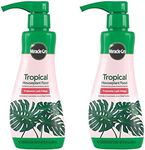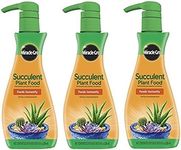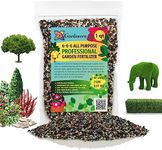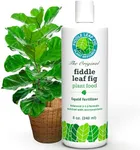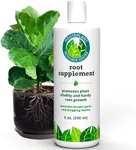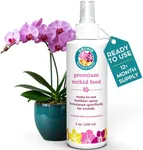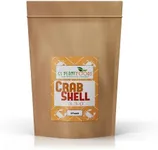Buying Guide for the Best Potted Plant Fertilizer
Choosing the right fertilizer for your potted plants is crucial for their health and growth. Fertilizers provide essential nutrients that plants need to thrive, especially when they are grown in containers where the soil can quickly become depleted. Understanding the key specifications of fertilizers will help you make an informed decision and ensure your plants get the nourishment they need.NPK RatioThe NPK ratio represents the percentage of Nitrogen (N), Phosphorus (P), and Potassium (K) in the fertilizer. These are the primary nutrients plants need. Nitrogen promotes leafy growth, Phosphorus supports root development and flowering, and Potassium enhances overall plant health. For leafy plants, a higher nitrogen ratio (e.g., 10-5-5) is beneficial. For flowering plants, a balanced or higher phosphorus ratio (e.g., 5-10-5) is ideal. Choose a ratio based on the specific needs of your plants.
Type of FertilizerFertilizers come in various forms, including liquid, granular, and slow-release. Liquid fertilizers are fast-acting and easy to apply, making them suitable for quick nutrient boosts. Granular fertilizers are sprinkled on the soil and provide nutrients over time. Slow-release fertilizers gradually release nutrients over several months, reducing the need for frequent applications. Consider your convenience and the specific needs of your plants when choosing the type.
Organic vs. SyntheticOrganic fertilizers are made from natural materials like compost, manure, and bone meal. They improve soil structure and provide a slow, steady release of nutrients. Synthetic fertilizers are chemically manufactured and provide immediate nutrient availability. Organic options are better for long-term soil health and are environmentally friendly, while synthetic fertilizers offer quick results. Choose based on your preference for natural products and the urgency of your plant's nutrient needs.
MicronutrientsIn addition to NPK, plants also need micronutrients like iron, manganese, zinc, copper, and boron in smaller amounts. These are essential for various physiological functions and overall plant health. Some fertilizers include these micronutrients, while others do not. If your plants show signs of micronutrient deficiencies (e.g., yellowing leaves, stunted growth), look for a fertilizer that includes a broad spectrum of micronutrients.
Application FrequencyDifferent fertilizers have different recommended application frequencies, ranging from weekly to every few months. Liquid fertilizers often require more frequent applications, while slow-release fertilizers can last for several months. Consider how much time you can dedicate to fertilizing your plants and choose a product that fits your schedule. Consistent feeding according to the recommended frequency will ensure your plants receive a steady supply of nutrients.

